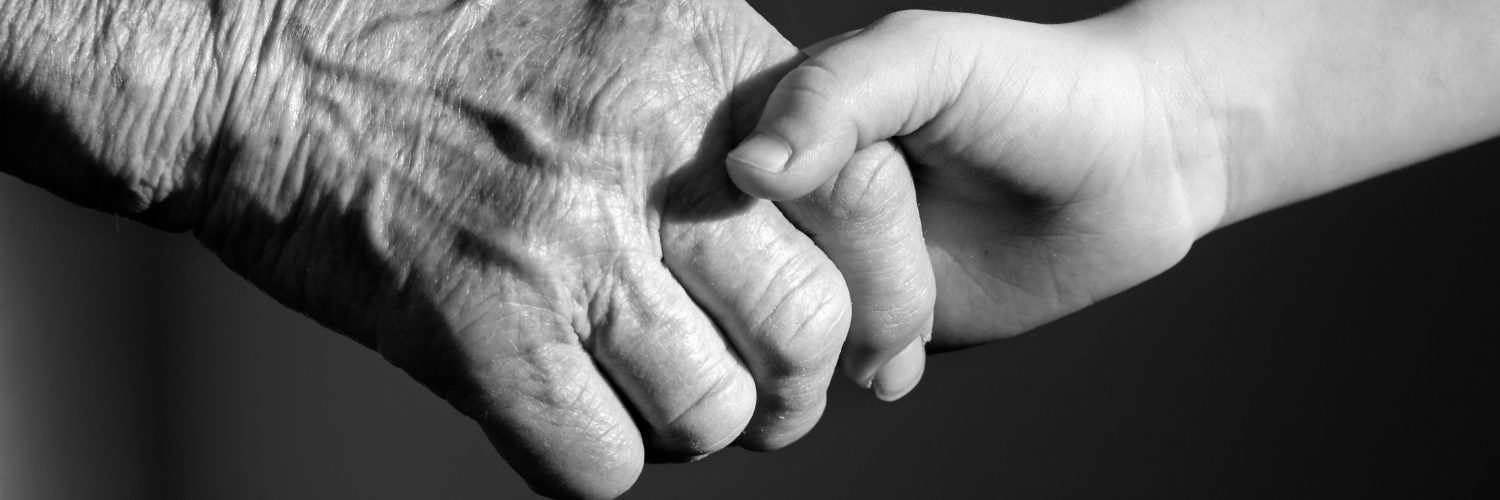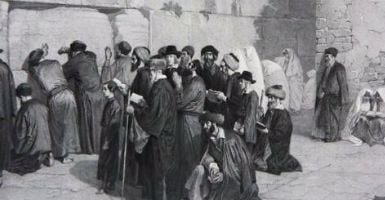Chayei Sara 5780
“And Avraham was old, advanced in years, and Hashem had blessed Avraham with everything.” (Bereishis 24:1)
Honor and respect for the elderly is a hallmark of Judaism. Unlike other cultures that worship the youth and disregard the elderly, the perspective of Yiddishkeit is quite the reverse. Older people are regarded for their wisdom and life experience, and are viewed as a connection to previous generations. They sit at the center of their extended families who look up to them with respect and gratitude.
It is common for elderly people to suffer from medical issues. Sparing no effort and expense, the members of their family are often the ones who strive to care for them. What should the perspective of a doctor be when he treats elderly patients? Should their age make any difference to his order of priorities?
As an extreme example, two people are rushed into the emergency room in critical condition. Both arrived at precisely the same moment and both require the use of a certain new device in order to save their lives. There is, however, only one of these devices available. The attending physician must decide to whom he will offer the device and save their life. If one patient is almost ninety years old and the other is a young man with all of his life ahead of him, should the doctor take that into account when deciding which life to save?
The Mishna in Horayos (3:6-8) states:
“Whoever is holier than another takes precedence over the other… A man takes precedence over a woman to support and to return his lost article… a Kohen takes precedence over a Levi; a Levi takes precedence over a Yisrael; a Yisrael takes precedence over a Mamzer; a Mamzer takes precedence over a Nasin; a Nasin takes precedence over a convert; a convert takes precedence over a slave who has been freed. When is this the case? When their statuses are equal. But if a Mamzer is a Talmid Chacham and a Kohen Gadol is an Am haAretz – the Mamzer who is a Talmid Chacham takes precedence over the Kohen Gadol who is an Am haAretz.”
The Rema (Y.D. 252:8)[1] rules that the order of precedence outlined in these Mishnayos also applies to saving lives[2]. However, the Poskim write categorically that the order is only upheld when the patients arrived at the medical facility at the same time, have an equal chance of surviving, and their treatment is equally urgent. If this is not the case, then treatment is offered to the patient who is in the most danger or to the one for whom the treatment will be most effective[3].
The Shevet haLevi (10:167) writes similarly:
“And as for the point you raised regarding ‘Ein Ma’avirin Al haMitzvos’, certainly if one person arrived first, the doctor needs to treat him first even if he knows that others are soon coming, be they Kohanim, Levi’im, men or women. But if they all are waiting in front of him, or if other injured people arrive while he is still preparing to treat the first patient and he hasn’t yet begun treating him, one would need to consider whether there would be an issue of ‘Ein Ma’avirin Al haMitzvos’ that would override the order of precedence given by Chaza”l. At any rate it is obvious that if the condition of somebody who would not have precedence is worse, and is in greater danger, one should certainly turn to deal with him first. Moreover, if one has begun treating one patient, it is forbidden to abandon him on the basis of adhering to the order of precedence.”
HaGaon Rav Asher Weiss Shlit”a also came to the same conclusion:
“When we speak of Pikuach Nefesh and saving lives, these two factors should be paramount and the only consideration. I have written similarly in a letter to those who work for Hatzalah who want to know whose life takes precedence in the case of vehicular accident or terrorist attack. I explained that precedence is not given to the Kohen over the Levi or man over woman. Rather they should prioritize those who are in imminent danger and those whom there is a greater chance of saving.”
However, as we have said, in the hypothetical unlikely scenario that all things are equal, there is an order of precedence as to whom should be treated first.
Rav Yaakov Emden zt”l (Migdal Oz, Chap. ‘Even Bochen’ Pina Alef) adds a number of other categories of precedence that do not appear in the Mishna in Horayos. He writes that one should save a younger person before an older one, and a healthy elderly person before a sick one.
Why should the life of a younger person take precedence over that of an older one? One possibility is that a younger person has his whole life ahead of him, or that he is still able to procreate. In fact, Rav Yaakov Emden writes clearly that a person who is able to procreate should be given precedence to a person who can’t. Another possibility is that generally the chances of successfully saving lives are greater among younger people and, as stated earlier, one always gives priority to the person who has the greater chance of surviving.
Either way, the Poskim roundly dismiss the words of Rav Yaakov Emden in this regard. Their reactions give us an insight into the Halachic approach to the elderly.
Rav Moshe Feinstein zt”l wrote as follows:
“Regarding an extremely old person who has taken ill. Certainly we are obligated to treat him as best we can, just like we would treat a younger person, even if he no longer is interested in living and asks that we do not treat him. In fact it is forbidden even to contemplate acquiescing to his request, even if an esteemed doctor advises it. In fact, even as far as giving priority for receiving medications, one should probably not take his request into account.” (Shu”t Igros Moshe, Choshen Mishpat Chelek Beis Siman 75)
Rav Shlomo Zalman Auerbach zt”l (in a letter to Prof. Shimon Glick) wrote these words:
“…Therefore we need to mainly take into consideration the level of danger and the chances of saving lives. Considering the age of the patient does not come into the reckoning at all.”
In other words, it is true that if the chances of saving an older person are lower than saving the younger one, then we should prioritize the younger one, but not just because he is younger.
It is clear that Rav Moshe and Rav Shlomo Zalman zt”l entirely dismissed the notion of favoring the lives of the youth over the elderly. Why were they so certain? What led them to this definite conclusion?
It is probable that their confident approach is based upon an appreciation of the inherent value of the holiness of life. In their eyes, one moment of life was worth all the riches in the world. Therefore, an older person, though he cannot expect many more years of life, is fully deserving of life-saving efforts and interventions as every remaining moment of his life is infinitely precious.
We cannot place a value on life based on a person’s potential or his possibility to procreate for there are infinite possibilities and achievements open to everybody – even the most aged individual. Therefore, there is no way of measuring or comparing people’s lives with one another in order to determine whose is more important.
This perspective on the value of life, particularly of the elderly, has begun to have increased prominence in medical practice in recent years. In the past, people would often complain that medical staff paid less attention to elderly patients and would give precedence to treating the younger ones. There is growing awareness of the fact that the life of the elderly is enormously valuable and that their treatment should be no less important than that of younger patients.
This is true not only regarding saving lives. Today, even octogenarians are living active lives, participating in sports and exercise, benefiting their health immeasurably and increasing their life expectancy. Doctors play an active role in their health, working to correct orthopedic and other issues, and performing surgeries and procedures that help them regain and maintain active, healthy lifestyles.
This approach, as we have seen in the words of the Poskim above, is proper and moral. We should consider every moment of life precious and holy, and do all that we can to guard and improve the life of the elderly just like the life of our youth.
[1] See Beis Yosef (ibid. 251) in this regard.
[2] This is the accepted Halachic position, although there are Poskim who disagree.
[3] See Tzitz Eliezer (17:72) in the name of the Shulchan Atzei Shitim (by the author of the Mirkeves haMishna) 1:6, Igros Moshe (C.M. 2:73:2), Minchas Shlomo (2:82:2), ‘Assya’ (59-60 Iyar 5757) in the name of Rav Shlomo Zalman Auerbach zt”l, Shevet haLevi (10:167) and Kovetz Teshuvos (3:159).















Add comment